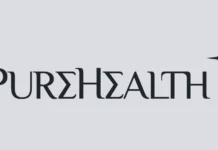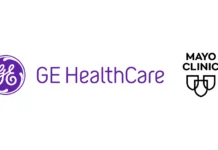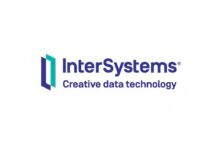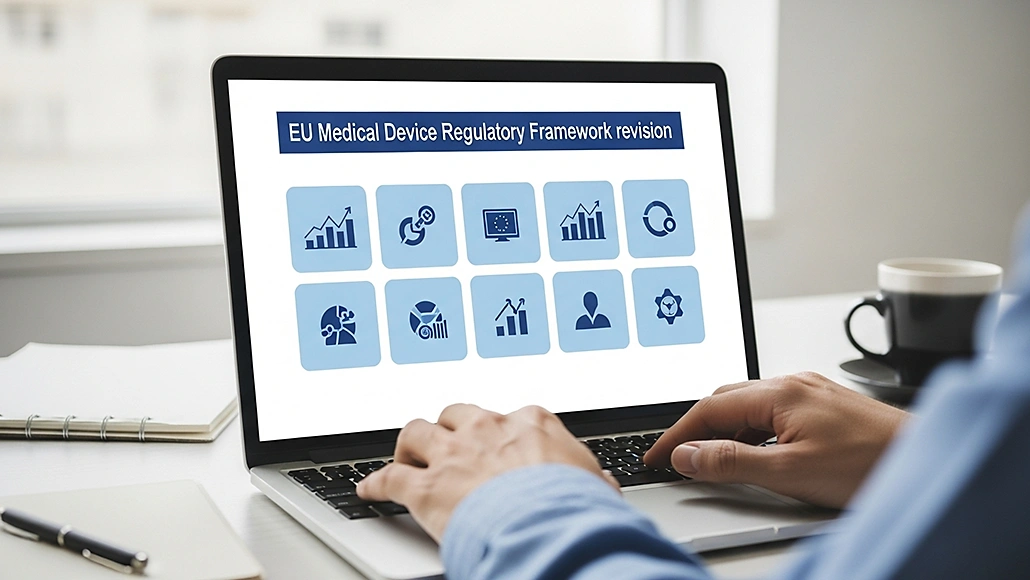The European Commission has gone on to initiate a call for evidence when it comes to targeted revision of Medical Device Regulation (MDR) and In Vitro Diagnostic Medical Device Regulation (IVDR), thereby marking a major response to the mounting industry pressure pertaining to regulatory reform. The consultation, which closed on October 6, 2025, looks forward to gathering stakeholder input when it comes to simplifying the regulatory framework while at the same time maintaining patient safety benchmarks.
It goes on to represent the acknowledgment from the Commission that the present rules, while attaining their safety objectives, have gone on to create unintended market access barriers along with administrative burdens, which go on to threaten the device availability as well as innovation throughout the EU.
It is well to be noted that the targeted revision goes on to emerge from the consistent execution challenges as the MDR became applicable in May 2021 and the IVDR in May 2022, in addition to the complex transition timelines.
As per the call for evidence from the Commission, the regulatory framework has gone on to face criticism for imposing some very demanding requirements, which, by the way, also apply to current devices, in addition to the limited capacities when it comes to notified bodies and insufficient preparedness of the manufacturers, therefore leading to the risk of shortages as well as the disappearance of devices that are critical from the market.
The fact is that these challenges have implied many extensions of transitional periods by way of a number of regulations. These happen to include regulation 2024/1860 that imposed new supply chain notifications and also phased in the Eudamed rollout in addition to the revised IVDR deadlines. The present transition deadlines are till December 2027, 2028, or 2029, all of which depend on device type as well as risk classification.
Apparently, the Commission has been conducting a targeted assessment of the regulation for one year, following the requests from the European Parliament highlighting the immediate requirement to go ahead and revise the framework, many Member States, and also industry stakeholders so as to make the medical device regulatory framework as simple as it can be.
The call for evidence specifically notes that the stakeholder groups as well as institutional actors have underscored that unpredictable certification timelines along with inconsistent practices across the EU are eroding the efficiency of the CE marking process. It is well to be noted that some regulatory requirements go on to exceed the actual risk profile of devices, generating costs and burdens that are unnecessary.
The Commission’s initiative, apparently, looks forward to achieving multiple objectives while at the same time preserving the fundamental structure of the present MDR as well as the IVDR framework. The call for evidence goes on to identify administrative burden reduction, which includes the reporting obligations, as a major target for reform. Notably, the initiative also looks to enhance the predictability along with the cost-efficiency of notified body certification processes. Conformity evaluation requirements would be made more apt, especially for low- and medium-risk devices and those serving special patients.
It is well to be noted that further digitalization when it comes to the procedures represents yet another major focus area. The Commission also looks forward to streamlining numerous procedures as well as governance arrangements throughout the regulatory system. Interestingly, international cooperation opportunities, which include the dependence mechanisms where appropriate, would be expanded so as to benefit the EU medical device sector. At the end, the fact is that the initiative looks forward to better aligning the medical device regulatory framework along with other relevant EU legislation.
The Commission anticipates these changes to go ahead and generate certain positive economic effects all across the EU through reducing administrative burden on manufacturers as well as other economic operators, thereby decreasing the compliance costs, supporting innovation, and, at the same time, enabling greater device range so as to reach the market rapidly. Notably, the initiative is also supposed to increase EU competitiveness within the medical devices sector and at the same time make the region even more attractive for investors while at the same time ensuring more efficient usage of notified body resources and also decreasing the administrative burden in terms of health institutions along with member state authorities.
MedTech Europe, which happens to be representing the medical technology industry throughout Europe, has gone ahead and given detailed feedback by way of a letter dated 19 September 2025, which has outlined the organization’s priorities when it comes to the revision process. Interestingly, the industry association does acknowledge the massive strain on the medical technology sector of Europe and emphasizes making sure of consistent availability of a wide range of existing and innovative devices to the European patients, going on to represent a critical challenge.
Notably, MedTech Europe happens to argue that the regulatory pathway for medical technologies in the EU must prominently enhance its global competitiveness so as to ensure patients continue to get the deserved benefit from MedTech product availability; that requires substantially decreasing high lifecycle costs and, at the same time, addressing other unintended effects when it comes to MDR and IVDR.
Notably, MedTech Europe happens to outline a dual approach that needs both comprehensive legislative reforms along with immediate relief measures. The organization gives strong support for the legislative revision initiative of the Commission, although this support is conditional upon delivering a regulatory framework that happens to promote efficiency, adaptability, innovation, and also sound governance. It is well to be noted that the association puts emphasis on the fact that meaningful reform should address both MDR along with IVDR and, at the same time, also recognize the distinct features and challenges of every sector.
Interestingly, central to MedTech Europe’s position happens to be the view that the notified body system is indeed fundamental when it comes to the regulatory framework. The association advocates for a consistent central role in terms of future reforms and at the same time also proposes establishing unified as well as accountable governance structures, which would in a way simultaneously elevate the operational efficiency and at the same time also strengthen the global competitiveness when it comes to the CE marking system.
To get immediate relief, MedTech Europe goes on to call for three parallel measures urgently alongside the legislative revision. The first happens to involve harmonizing notified body regulations by way of executing acts that go on to establish maximum evaluation timelines and clarify notification needs. The second measure has in it pilot programs for specialized regulatory pathways that target orphan devices and also pediatric devices. Most interestingly, the third urgent action goes on to involve postponing recertification needs for devices that happen to be already certified as per the medical technology regulations so as to prevent additional bottlenecks throughout the 2028 transition period.
The fact is that the Commission has established an indicative timeline when it comes to the fourth quarter of 2025 for adoption of the revision proposal; however, the industry experts suggest a proposal revision within the first quarter of 2026. Notably, the call for evidence consultation period started on 8 September, 2025, and runs to 6 October, after which the Commission is going to evaluate stakeholder input in addition to the evidence that has been collected all across the targeted evaluation process.
Apparently, rather than conducting a complete impact assessment, the Commission is going to prepare the proposal in addition to the analytical staff working document, which is going to explain the proposed measures, go on to present supporting evidence and stakeholder viewpoints, and also estimate the potential cost savings. Interestingly, this kind of an approach reflects the assessment of the Commission that the revision happens to involve focused simplification measures having limited alternatives that are aimed at decreasing the regulatory burden and also improving framework predictability while at the same time also maintaining the present legislative objectives unchanged.
The consultation strategy goes on to include both a public call for evidence as well as targeted consultation activities like surveys and workshops, along with certain dedicated meetings, with special focus on involving small as well as medium enterprises. It is well to be noted that the Commission has gone ahead and identified many stakeholder groups when it comes to engagement, including the competent authorities across the EU Member States as well as the EEA states, certain notified bodies, economic operators, and of course, their representative associations.
The fact is that the Commission’s targeted revision initiative goes on to signal recognition that regulatory ambition has to be balanced with practical execution realities. Although MDR and IVDR have successfully enhanced the safety standards, the unintended effects on market access and also innovation capacity have already prompted this required recalibration.
Apparently, MedTech Europe’s complete response underscores industry concerns pertaining to regulatory predictability as well as proportionality. The emphasis of the organization on immediate relief measures in addition to longer-term reform goes on to suggest that the present regulatory pressures may as well intensify before the comprehensive solutions go on to take effect.
The Commission’s decision to let go of a full effect assessment in favor of the targeted simplification measures goes on to indicate the confidence that the challenges are well taken care of and the solutions happen to be relatively straightforward. But the barrier lies in attaining certain meaningful burden reduction while at the same time maintaining the credibility in terms of safety and performance framework, which, by the way, has taken years to establish.
Interestingly, businesses operating within the medical device and diagnostics sectors may realize value in terms of engaging with the consultation process, especially given the emphasis by the Commission on gathering practical examples as well as the cost-saving estimates. The tight timeline goes on to suggest that stakeholder input at the time of this consultation window could as well significantly influence the scope and approach of the final proposal.
The parallel development when it comes to immediate relief measures by way of implementing acts and pilot programs may as well provide some breathing space, although the effectiveness of such measures is most likely going to depend on member state implementation along with notified body capacity. Interestingly, companies might as well consider how best to position themselves in terms of both the short-term relief measures as well as longer-term regulatory frameworks that go on to emerge from this revision process.


















